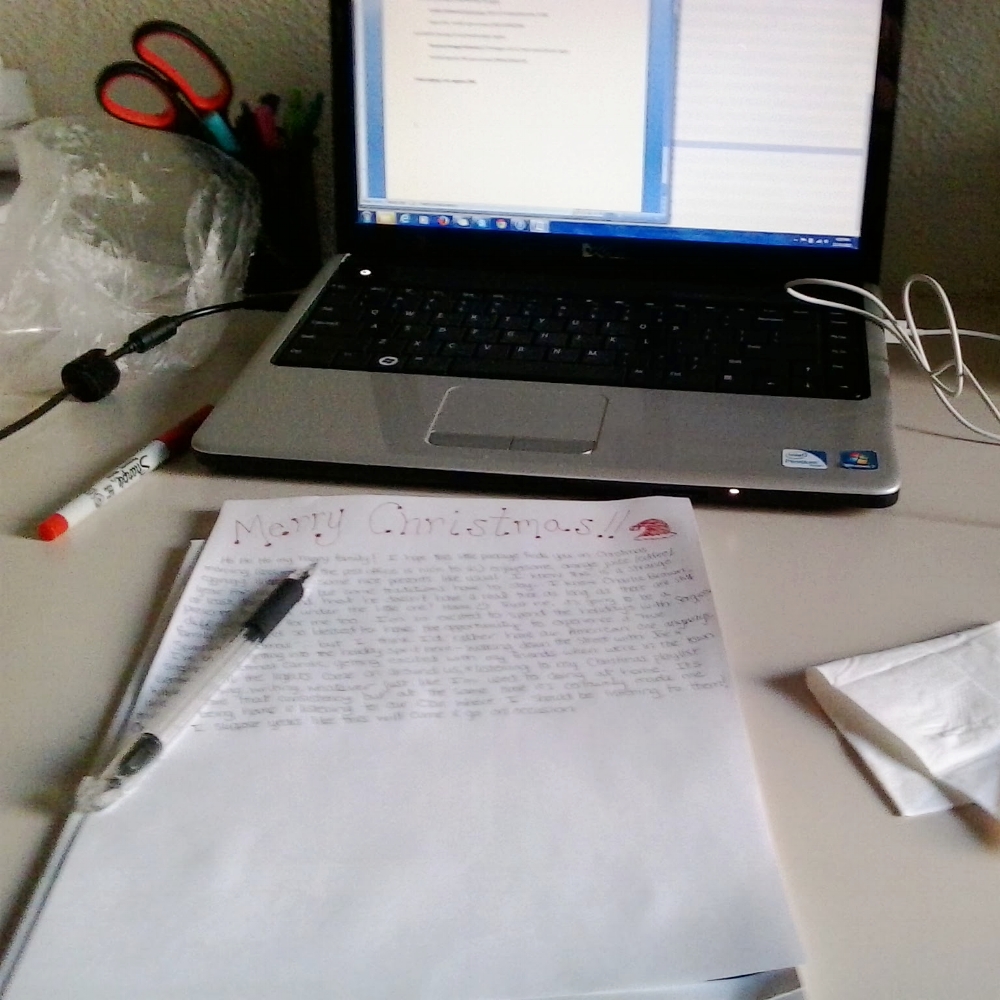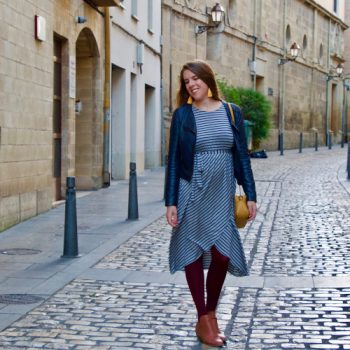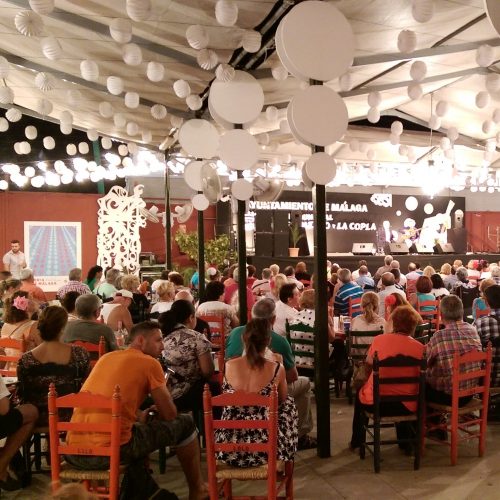
An Introduction to Spanish Ferias
Dear Max,
If you’re in Spain this spring, you’re sure to happen upon a feria or two. While the Feria de Abril in Sevilla is arguably the biggest and most renown traditional “fair,” you will quickly find that most every city and town celebrates its own version of feria at its own time. Despite some differences in size, customs, and timing, a few elements remain the same across the board.
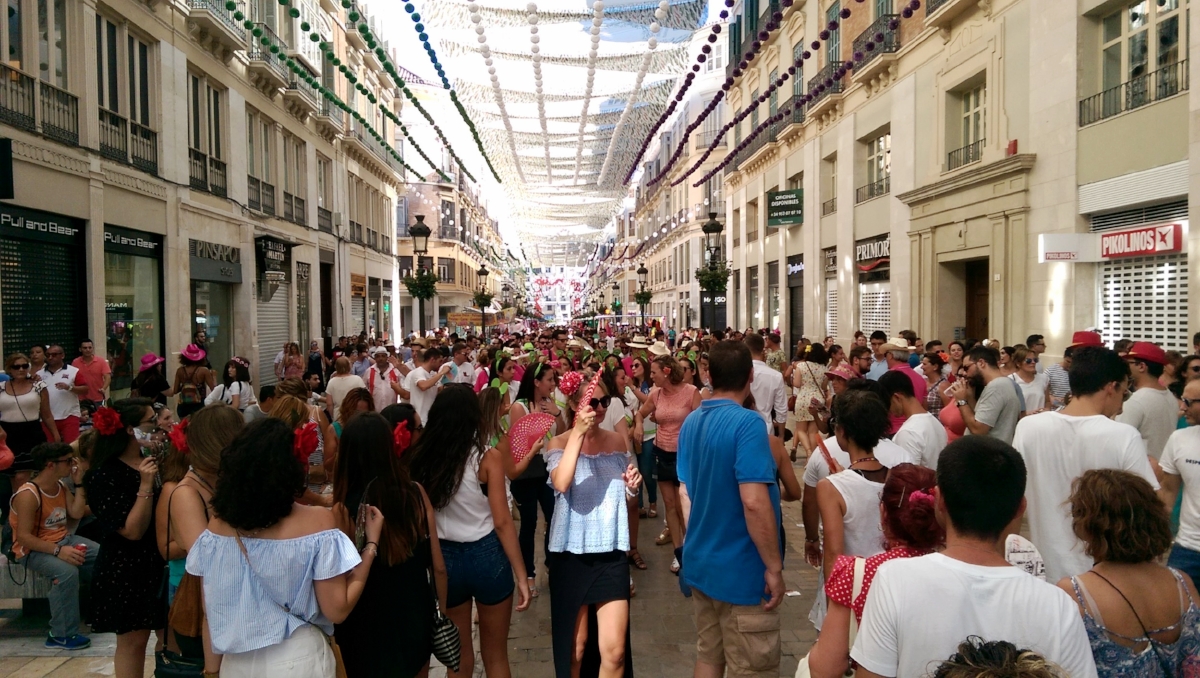 Background
Background
Do the ferias here in Spain truly have a common origin? Yes and no. With some happening as early as April and others as late as August, I’ve read that they’re considered a celebration of Spring…or Summer…or Autumn. Honestly, my opinion is that Spanish people like to party and so, especially in the south of Spain, you can pretty much find a different “town fair” all throughout the warm months! A number of these fairs take place in accordance with the Gregorian calendar, such as the Feria de Abril which generally starts two weeks after Semana Santa or the Corpus feria in Granada which takes place during the week around (you guessed it) Corpus Cristi. Despite sometimes having religious roots, these week-long celebrations generally have nothing to do with Catholicism. Instead, they are a pretty typical combination of loud music, expensive junk food stands, and fair rides that you could find anywhere. If it sounds like your average American state fair or local ‘fest’ that’s because it’s quite similar―basically, ferias are a time for the town or city to come together and celebrate, as towns and cities often do around the world. The following aspects, however, are especially Spanish.
Attire
One of the first things you should know about feria is that there are very special and serious traditional outfits worn by women and men. Although it is not required to don this clothing, you will find many of the women dress in sevillana dresses, which are typically brightly colored and often polka-dotted with flowing layers ideal for dancing flamenco. The men’s traditional outfits are called trajes cortes, which are a special type of suit consisting of a short jacket and tight pants.
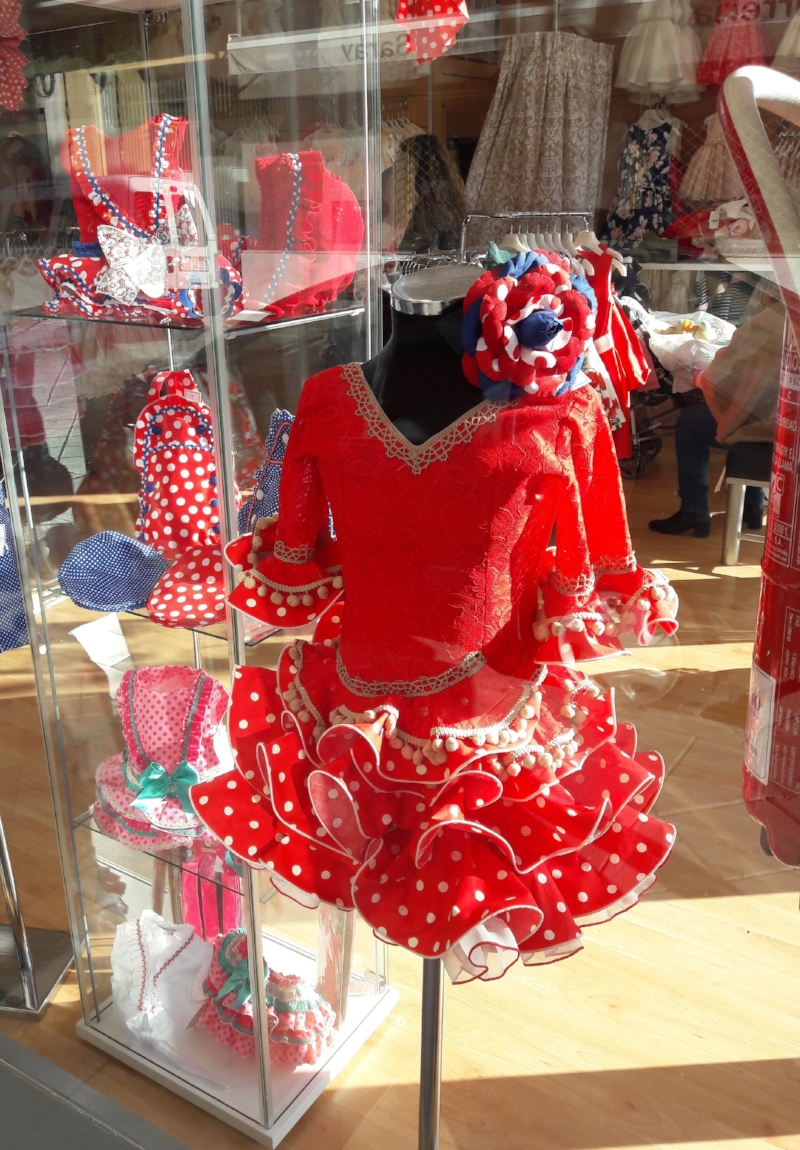 Both of these outfits can get quite expensive so you will see plenty of people branching out into other dressy attire as well (especially those who attend the feria on multiple days), but it’s important to note that this is that one time a year when people will go all out in terms of their clothing. Dresses, skirts, and high heels for women as well as suits, dress shoes, and hats for men are typical if going out for the evening. During the day, you could get by in less dressy attire but be aware that your typical tank top and shorts might stick out at night. As a woman, even if you’re not investing in a traditional sevillana dress, it’s normal (and lots of fun!) to pick up a big fake flower to stick in your hair. Other accessories, like chunky plastic jewelry and peinetas, or ornate combs, can be rocked with or without a sevillana dress. Be sure to check out our friend Caroline’s account of purchasing her own traje sevillana and accessories for a more detailed explanation.
Both of these outfits can get quite expensive so you will see plenty of people branching out into other dressy attire as well (especially those who attend the feria on multiple days), but it’s important to note that this is that one time a year when people will go all out in terms of their clothing. Dresses, skirts, and high heels for women as well as suits, dress shoes, and hats for men are typical if going out for the evening. During the day, you could get by in less dressy attire but be aware that your typical tank top and shorts might stick out at night. As a woman, even if you’re not investing in a traditional sevillana dress, it’s normal (and lots of fun!) to pick up a big fake flower to stick in your hair. Other accessories, like chunky plastic jewelry and peinetas, or ornate combs, can be rocked with or without a sevillana dress. Be sure to check out our friend Caroline’s account of purchasing her own traje sevillana and accessories for a more detailed explanation.
Casetas
Next to the huge, sparkling, fairytale-esque entryways, casetas are the most quintessential feria image that comes to mind. Bars, clubs, and a variety of organizations will all set up their own caseta, or tent, forming rows and rows of party spaces bumping with music. During the day, you can often order food as well as see live music in the casetas. Come sundown, however, the place to be is partying in the tents. Whenever I try to go to feria here in Granada with my friends, I usually opt for the day trip as I cannot keep up at night. Many young people will pre-game, or botellón, at home to ensure they’re already drunk by the time they arrive at the casetas―as late at 2 or 3am if your friends are anything like mine! I personally enjoy the casetas a bit earlier, when there aren’t as many people and you can have a conversation sitting down or at least move without hitting other sweaty people on the dance floor.
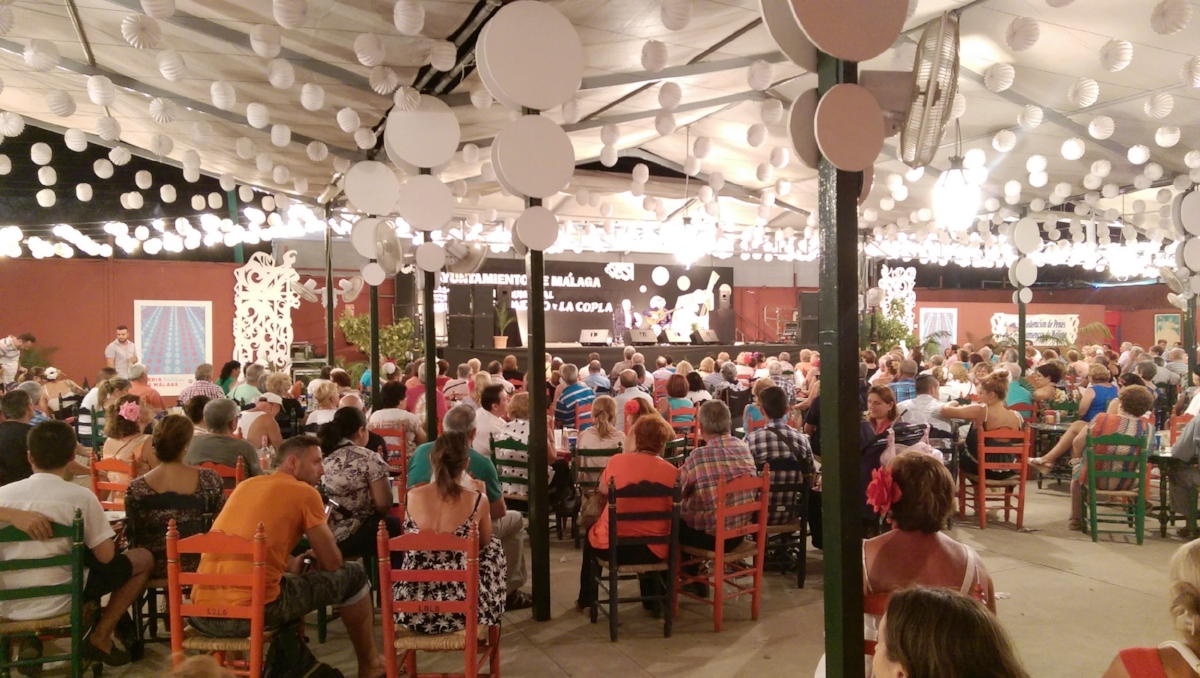 Keep in mind that the bars’ and clubs’ casetas will be open to the public but some of the casetas set up by organizations will require membership or an invitation from a member to enter. At first, this made me nervous, worrying that I’d try to enter the wrong caseta and be embarrassed by being turned away. However, I’ve found that there’s often a very clear vibe hinting at the exclusiveness of these casetas―oftentimes, membership-only tents will be much calmer, have more families, and even have people dressed the same. Still, if you happen to wander into the wrong one and get turned away, no pasa nada!
Keep in mind that the bars’ and clubs’ casetas will be open to the public but some of the casetas set up by organizations will require membership or an invitation from a member to enter. At first, this made me nervous, worrying that I’d try to enter the wrong caseta and be embarrassed by being turned away. However, I’ve found that there’s often a very clear vibe hinting at the exclusiveness of these casetas―oftentimes, membership-only tents will be much calmer, have more families, and even have people dressed the same. Still, if you happen to wander into the wrong one and get turned away, no pasa nada!
Other details
There is SO much we could get into when it comes to ferias! Many of these fairs include bullfighting, horse-dancing competitions, and other traditional espectáculos. Typically, the bulk (if not all) of the feria takes place at the fairgrounds, which tend to be bit out-of-the-way. However, in some cities, like Málaga, that simply means that there’s a bigger party scene in the city center during the day (with the daytime fairground experience being more mild) and then the party moves to the fairgrounds at night when the city center quiets down. Each city/town is going to have its own vibe and customs in this way so I highly suggest doing some research ahead of time to get a better idea about the particular feria you will attend. Asking a local (and ideally going with them!) is always your best bet for an authentic experience.
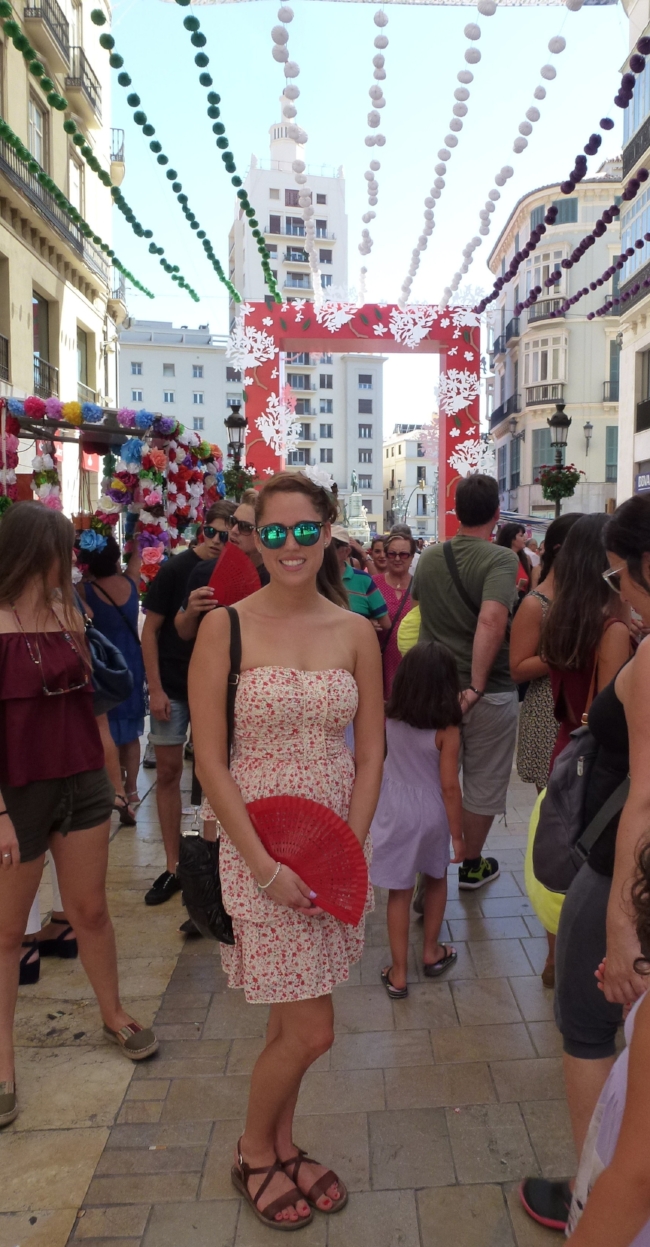 Here are links to a few of the ferias we’ve mentioned or been to here in Spain.
Here are links to a few of the ferias we’ve mentioned or been to here in Spain.
Sevilla: https://feriadesevilla.andalunet.com/?lang=en
Málaga: http://www.malagaturismo.com/es/eventos/feria-de-malaga-2018/34
Granada: http://www.granadadirect.com/fiestas/corpus-christi-granada/
Alicante: https://hogueras.com/calendario-de-hogueras/
Córdoba: http://english.turismodecordoba.org/feriadecordoba.cfm
Have fun (and be sure to let us know what your thoughts are about Spanish ferias!)
Sincerely,
Spain

